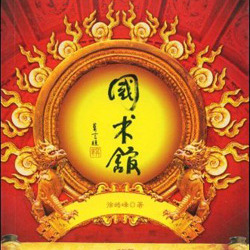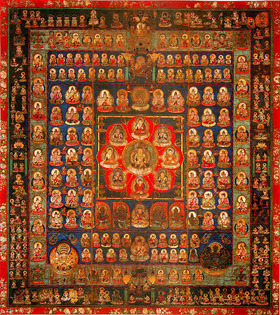#best overview of his writing i've come acorss so far
Explore tagged Tumblr posts
Text
Xu Haofeng's first novel was published the following year, in 2007 : "A Taoist Monk Comes Down from His Mountain" ( 《道士下山》 ) . We then spoke of the ���hard current” of the wuxia novel (硬派武侠小说) . The story is, however, full of humor: at the beginning of the Republic, a little Taoist monk who can no longer bear solitude comes down secretly from his mountain and returns to the world. Result: he finds himself in a country in chaos, and

“A Taoist monk comes down from his mountain” ( 《道士下山》)
has a series of strange, fantastic encounters that transform his existence.
It is a novel with multiple characters constructed a bit like “At the Water's Edge” ( 《水浒传》) which is the implicit reference . The book was a bestseller.
In October 2008 , the publication of his third novel, “The National School of Guoshu ” ( 《国术馆》 ) [6] , met with the same success: it was placed in the list of the ten best sellers of the year and was even praised by Mo Yan (莫言) . Xu Haofeng asserts his style there.
Unlike Jin Yong or Gu Long, who describe the tricks found by their martial arts masters to win their fights, Xu Haofeng focuses on depicting the way in which his characters comply with very strict training. On the other hand, what is interesting about him is that he often diverges from his narrative line to insert reflections on subjects like calligraphy, painting, food, or antiques, which give depth and diversity to the story. his stories. But above all the story is treated in the style of fantastic realism (魔幻写实主义) that Xu Haofeng knows well: he wrote an essay on Borgès, “The Eye of Borgès” ( 《博尔赫斯的眼睛》).

“The National Kung Fu School” ( 《国术馆》)
The main character is a young man who believes he was director of the school of the title in Nanking in the 1920s. He is described with great humor, continuing to apply rules from another age, like a a sort of Don Quixote embarked on an absurd and tragic journey. He preserves his values and his personal esteem, but is condemned to failure, symbol of a world itself condemned by modernity.
At the same time as his style asserts itself, his thinking becomes more complex. His short story “Survive” ( 《劫活》 ) takes place around a go board in the 1920s. The story is that of battles between Chinese and Japanese players, kung-fu masters, spies and Buddhist monks.
The complexity of the parallelism with the game of Go is illustrated by the title, which is a Go term, in fact. The whole game is based on a principle of life and death: circled pieces are 'dead', captured and eliminated from the game; one must capture (劫jié ) to survive (活huó ) , a vital principle of the Warring States period which saw the development of the game.
Xu Haofeng's latest novel returns to the theme of the game of go, but coupling it with a Buddhist theme. Published in November 2010 , it is titled “The Mandala of Enlightenment” ( 《大日坛城》 ) . The title refers to the s ū tra Maha Vairocana ( 《大日经》) , one of the two essential sutras of the Tibetan and Japanese tantric schools ; arriving in China at the very beginning of the 8th century , it was translated in 724-25, and the translation then reached Japan. The Sanskrit original having disappeared, it is this Chinese version which is the oldest.

“The mandala of enlightenment”
( 《大日坛城》)

the mandala of the Maha Vairocana sutra
According to this tradition, when the Buddha had achieved enlightenment, he remained in the form of Vairocana for seven days during which he transmitted his teaching to Vajrapani and other bodhisattvas , an obviously symbolic transmission. However, it is the game of go that is at the center of the story, because the main character was a master in China in the 1940s, at the time of the Sino-Japanese War. Go competitions, likened to martial arts competitions, reflect the struggle between the two countries, but inverted: while the Japanese run from victory to victory, the go master remains invincible...
The three elements, esoteric Buddhism, martial arts and the game of go, are linked in the novel by
convergent symbols; Xu Haofeng seems to make them the three components of a “way” ( “道”) of salvation.
-https://www-chinese--shortstories-com.translate.goog/Auteurs_de_a_z_XuHaofeng.htm?_x_tr_sch=http&_x_tr_sl=fr&_x_tr_tl=en&_x_tr_hl=en&_x_tr_pto=sc
#xu haofeng#lost in translation#best overview of his writing i've come acorss so far#but still not what I was trying to find again
11 notes
·
View notes